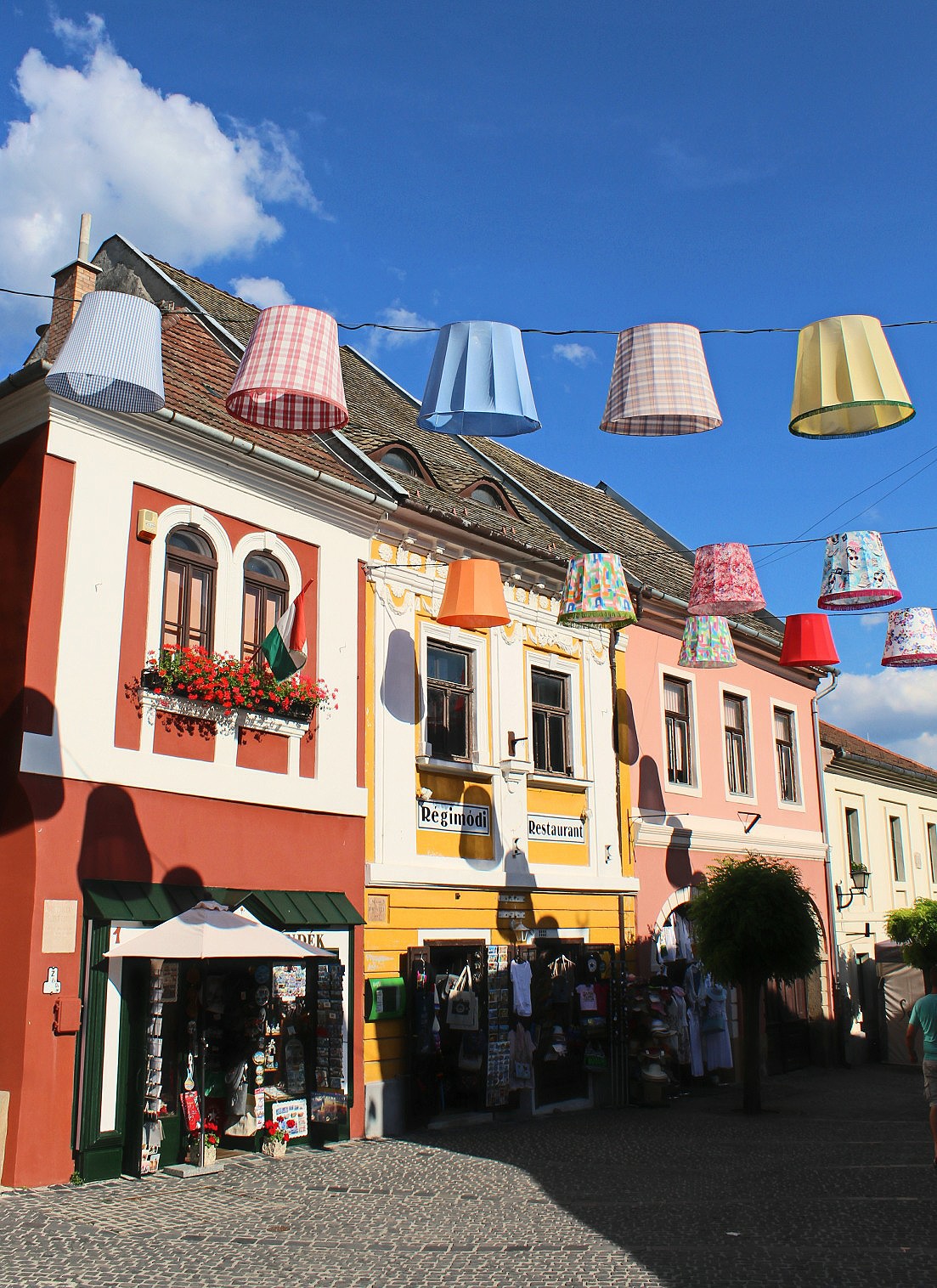Rising like Jedha in a mirage across the dusty fields alongside the M6, a giant oil refinery blazed blue flames from its hundreds of columns and spires.
It was an eye-catching sight as we crawled through heavy traffic held up by a road accident on a baking hot day.

Transdanubia is cut through by the wide waters of the River Duna which flows grandly eastwards from Vienna before turning south, at what is known as the ‘Danube Bend’ to Budapest and into the south of the region.
North of the Villány Hills is Dunaföldvar, set alongside what is called the southern stretch of the Hungarian Danube.

Our 2015 guidebook spoke of an elegant centre and well-kept Baroque and Secession buildings. The truth was a rather down at heel river town with once grand and colourful buildings looking faded and in a state of bad repair.
Rather incongruously its romantic ‘ruined tower’ which sits above the water and is all that is left of a 16th century fort, has been fully rebuilt.
The town’s outdoor swimming pool was packed with families and dogs enjoying the water in the late afternoon’s heat. Our nearby campsite had clearly seen better days but clean and brightly managed by a friendly and garrulous Hungarian who muttered about the incessant paperwork he had to carry out. “No computer, no printer, no wifi!”.
He filled out our details on carbon papers which we had to sign many times. In Hungarian campsites bureaucracy is either non-existent or over the top, if the former it costs more to stay. You can draw your own conclusion.

Further north and around the Danube, alongside it’s famous ‘bend’ is the delightful village of Szentendre. Its Baroque architecture, colourfully painted houses, cobbled streets and many churches make it a wonderful place to meander a day away.
Originally founded by the Romans, it was settled by Serbs, Dalmatians and Greeks in the 18th century contributing to its ‘Mediterranean’ feel. From the 1920s artists, attracted to its light and scenic setting, moved in. Today, the village is packed with galleries selling paintings, ceramics, jewellery and sculptures.

We wandered amongst other visitors spotting tour groups of smartly sun-hatted and elderly Asian women and younger British-brand wearing Asian teenagers.
The universal badging of the Union Flag on clothing, bags and accessories outside of the UK is remarkable, and baffling. We also overheard the first Americans voices since leaving France. “Say I gotta get me one of those fry things”. Langös is a flat pizza-shaped dough deep fried and smothered with cheese and salt, or cream and sugar. A tasty way either way to heart burn!
We powered off the calories with a long cycle ride along the Duna, past ‘grand design’ cubist houses and tumble down cottages as well as ferociously fenced and abandoned apartment blocks.
Several small car ferries plied a trade across the river. Alarmingly, we could take Bertha on board but didn’t fancy testing the 3.5 tonne weight limit!
Further along the bend, at its narrowest point, we peered up at the impressively ruined citadel of Visegrad. With its accompanying Royal Palace it was one of Hungary’s finest royal complexes but fell to dereliction, like so much of its renaissance splendour, in the 16th century after the Turkish invasion.










